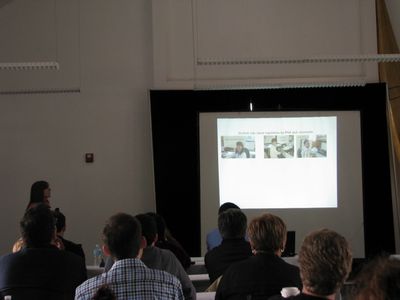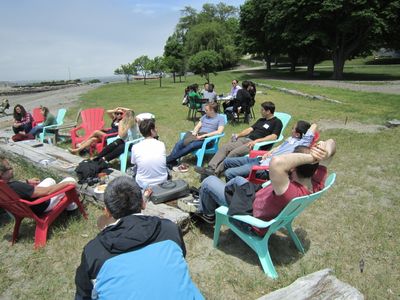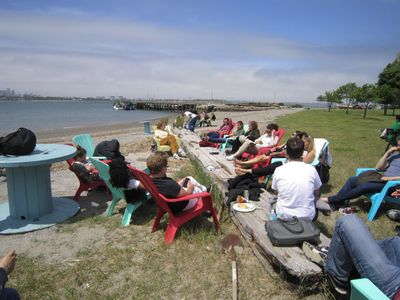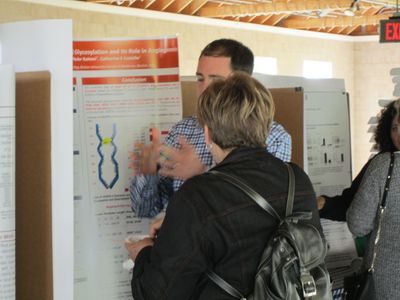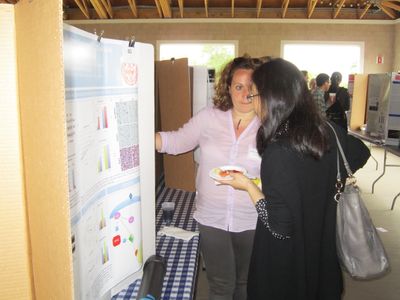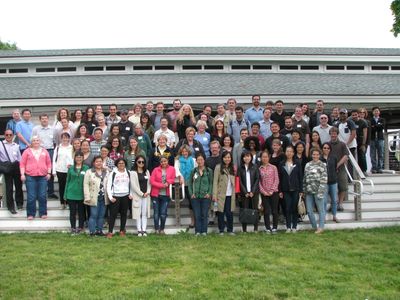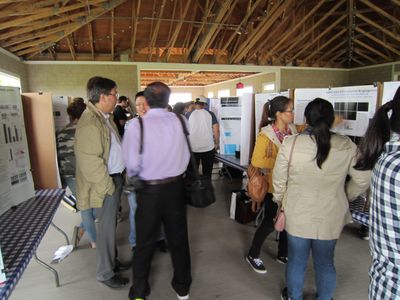Molecular mechanism of G protein activation by GIV, a protein that promotes metastasis
The insufficient mechanistic information on metastasis has precluded the development of efficient therapeutics for it. The Gα-Interacting, Vesicle-associtated (GIV) protein is emerging as a very promising candidate to become one of the “master regulators” of metastasis and as such, its characterization may open new avenues for therapeutic intervention.
By a combination of biochemical and structural techniques, including NMR, a team of researchers have uncovered the molecular mechanism behind GIV binding and activation of a G protein. G proteins are components of the communication system the body uses to sense hormones in the bloodstream and send the corresponding messages to cells.
The results show that the mode of action of GIV differs from the well known GPCR proteins, because it binds to a different region. Molecular modelling and NMR data inform about the protein-protein interface and show that GIV binds to a cavity on the surface of the G protein. These results suggest and allosteric regulation mechanism as conformational changes in one site propagate to another distant site in the molecule.
The work has been the result of a close collaboration between the group of Mikel García-Marcos at Boston University, and the group of Francisco J Blanco at CIC bioGUNE, and has appeared in the journal Nature Communications.
The synergy between the two teams, and the participation or researchers from IRB Barcelona, Cornell University, and University of Glasgow has made it possible to uncover this novel mode of action of a G protein regulator. Multidisciplinary studies of this kind are key to characterize the complex biological processes relevant in biomedical cancer research.
Reference: Molecular mechanism of Gαi activation by non-GPCR proteins with a Gα-Binding and Activating motif. A Ibáñez de Opakua, K Parag-Sharma, V DiGiacomo, N Merino, A Leyme, A Marivin, M Villate, LT Nguyen, MA de la Cruz-Morcillo, JB Blanco-Canosa, S Ramachandran, George S Baillie, RA Cerione, FJ Blanco, M Garcia-Marcos (2017) Nature Commun 8, 13935.
Congratulations Graduates
The Department of Biochemistry would like to congratulate our recent graduates. Receiving a PhD in Biochemistry:Erin Bove-Fenderson, Carly Cederquist, Anthony Jay, Kshitij Khatri, Chun Shao, and Aleksander Szymaniak. Receiving a dual MD and PhD degree in biochemistry: Kelsey Derricks. Receiving a MA in Biochemistry: Wajeeha Qureshi.
Congratulations to all!
Biochemistry Retreat 2017
The 2017 Biochemistry Retreat was an all day event on Thompson's Island in Boston Harbor on Friday June 16th.
We had a great day and look forward to next year's retreat.
New Research Discoveries: Schreiber Laboratory
The Schreiber laboratory recently published a paper in PLOS One where they describe a novel mechanism whereby the acute phase protein serum amyloid A regulates extracellular matrix production. This work has relevance to cardiovascular disease including atherosclerosis. Former PhD students Stephanie Seidl and Larry Pessolano are co-first authors on this research.
New Research from Perissi Lab: GPS2 and insulin signaling
A new study from the Perissi lab has revealed an unexpected layer of regulation in the insulin signaling cascade based on the opposing actions of the ubiquitin conjugating enzyme Ubc13 and its inhibitor GPS2. The work, recently published in Molecular Metabolism, shows that Ubc13-mediated ubiquitination of the AKT/PKB kinase is required for its phosphorylation and activation in the insulin signaling cascade. Conversely, loss of GPS2-mediated inhibition of Ubc13 activity promotes sustained insulin signaling both in vitro, in 3T3-L1 adipocytes, and in vivo in the adipose tissue of GPS2-AKO mice. Dr. Valentina Perissi and Carly Cederquist, the graduate student who led the project, discuss their finding in the 60 Second Metabolist video (below)
All Fat Is Not Created Equal
Article in BU Today on Farmer laboratory research:
Spurring growth of healthy brown fat with experimental drug
We’re all familiar with white fat—a bit too familiar, perhaps. White fat is the stuff bulging around our waists and thighs, the result of too little exercise and too much fast food. Today, with more than one-third of American adults and 17 percent of children obese, according to the US Centers for Disease Control and Prevention, scientists are scrambling for new ways to treat obesity. One hope stems from a surprising place: brown fat, which is in many ways the alter ego of white.
Brown fat burns glucose and lipids to create heat, and it works in other ways to counter obesity, inflammation, and their ill effects. For many years,  scientists thought that brown fat existed only in small mammals and newborn human babies, who need help staying warm. Then, in 2009, scientists found brown fat in adult humans, and suddenly it became one of the hottest topics in metabolism research.
scientists thought that brown fat existed only in small mammals and newborn human babies, who need help staying warm. Then, in 2009, scientists found brown fat in adult humans, and suddenly it became one of the hottest topics in metabolism research.
Scientists have since found several ways to coax the growth of brown or “brown-like” fat in mice. The burning questions today: what is the best way to encourage the growth of brown fat, or even better, turn bad white fat into brown? And is there a way to turn this basic science into a drug for humans? If so, it would be the biological equivalent of turning lead to gold.
Now, a team of BU biochemists, led by Stephen Farmer, a School of Medicine professor of biochemistry, and postdoctoral fellow Hong Wang, offers the latest word on brown fat alchemy. In work published December 13, 2016, in Cell Metabolism, the researchers show that treating mice with the experimental chemotherapy drug Roscovitine (also known as Seliciclib or CYC202) produces patches of brown fat within the white, simultaneously increasing the mice’s energy expenditure and improving their metabolism. The group also developed a novel way to sort brown fat cells from white and sequence the cells’ genes. Their work uncovered three genetically distinct forms of brown fat, which they are calling “classic brown,” “beige,” and “brite,” and all of them seem to arise from different pathways. The work is significant because it suggests multiple routes and methods that might encourage brown fat to grow.
“This is a provocative study, which really illustrates that brown and beige fat are druggable targets in a meaningful physiological way,” says Bruce Spiegelman, a Harvard Medical School professor of cancer biology and a leading authority on fat cell regulation and differentiation. “Whether or not Roscovitine should be used is still an open question; it’s a toxic drug—but this study shows that drugs can be used.”
White fat looks white because it’s full of molecules called lipids, usually condensed into one large blob, that the body uses for long-term energy storage. Brown fat has lipids too, but they are broken into many droplets that the cell is constantly burning as fuel. Brown fat looks brown because it is packed with mitochondria, the bean-shaped powerhouses that make ATP (the coenzyme adenosine triphosphate), often called the energy currency of our cells. The mitochondria found in brown fat are a quirky lot, containing a special molecule called uncoupling protein, which allows the mitochondria to slack off on some of their ATP-making duties in favor of generating heat. The presence of this uncoupling protein, along with extra mitochondria and many lipid droplets, is the hallmark of brown fat.
The scientists already knew of two ways to induce the growth of brown fat cells in mice: with a diabetes drug called Avandia or by exposing them to cold—or a drug that mimics the body’s response to cold. In humans, Avandia makes white fat act healthier—producing more beneficial hormones and reducing inflammation. In mice, scientists have also found that the drug encourages patches of brown fat to grow within the white, a process called “beigeing.” But there are side effects: Avandia can cause, paradoxically, weight gain and heart problems in some patients.
“The ideal thing would be to have a drug that does all the good things Avandia does, without the side effects,” says Farmer, senior author on the Cell Metabolism study. “A lot of research now is focusing on what exactly the beigeing fat is, how it functions, and how we can activate it.”
For their current research, Farmer’s team raised two groups of mice, feeding them either a normal diet or a high-fat, high-calorie diet to induce obesity. The mice were further subdivided into groups receiving Avandia, a drug called CL-316,243 that mimics the body’s response to cold, the experimental chemotherapy drug Roscovitine, or nothing. After eight weeks, they found that only Roscovitine produced positive effects like lower blood glucose, less weight gain, and increased beigeing of white fat, with no negative effects like fatty liver deposits.
Next came the genetic analysis. The group used special transgenic mice for the experiment, in which their white fat cells fluoresced red and brown fat cells fluoresced green. This fat cell color-coding allowed the team to separate the brown and white cells and then analyze their genes. The researchers found four very different genetic patterns: one for white fat cells, one for classic brown cells, one for cold-induced brown, or “beige,” cells, and one for Avandia- or Roscovitine-induced brown, or “brite,” cells. It’s not yet clear if the cells have truly distinct origins or simply have different gene programs activated by different drugs. The patterns included a handful of genes not formerly known to be involved with fat.
It’s too early to say whether this work will lead to new treatments for obesity in humans. But Roscovitine, already in phase 2 clinical trials for certain cancers, appears to offer some hope. “This drug has great potential,” Farmer says.
Cathy Costello Elected as AAAS Fellow
Co ngratulations to Cathy Costello for her election as an AAAS Fellow. This is a well-deserved recognition of Dr. Costello’s contributions to mass spectrometry, particularly developing and applying new technologies to advance medicine and increase understanding of biology, and for service to the global community.
ngratulations to Cathy Costello for her election as an AAAS Fellow. This is a well-deserved recognition of Dr. Costello’s contributions to mass spectrometry, particularly developing and applying new technologies to advance medicine and increase understanding of biology, and for service to the global community.
Please read article in BUSM News and the full story at the AAAS.
Daniel Cifuentes Awarded Peter Paul Professorship
Dr. Brown and the Provost's cabinet recently announced that Daniel Cifuentes was awarded the Peter Paul Developmental Professorship. The awards highlight the caliber, potential, and continued vitality of Boston University’s diverse faculty and include a three-year, non-renewable stipend designed to support scholarly or creative work, as well as a portion of the recipients’ salaries. Peter Paul Career Development Professorships are awarded University-wide.
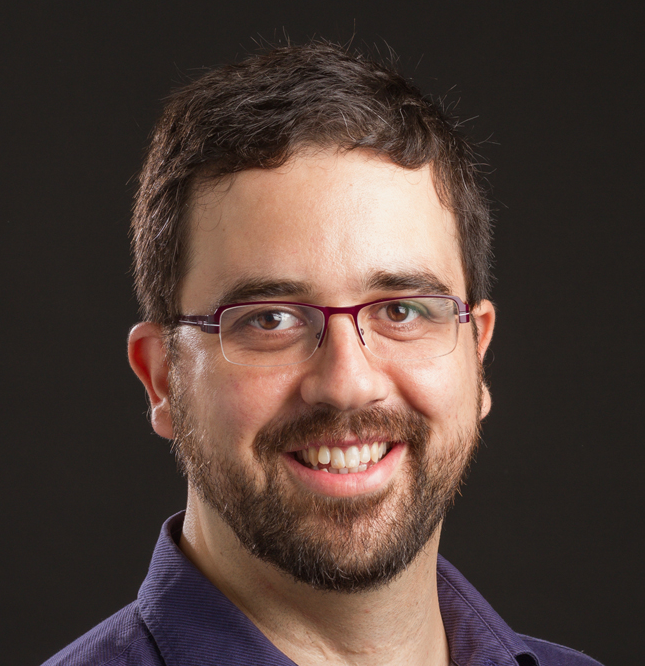 A biochemist and developmental biologist, Daniel Cifuentes' laboratory examines the early stages of embryo formation and the role of RNA during this period, using research on zebrafish to yield new insights into basic mechanisms of development. He is a graduate of the University of Barcelona (Spain), where he also received his doctorate in Biochemistry. He completed his postdoctoral training at Yale University.
A biochemist and developmental biologist, Daniel Cifuentes' laboratory examines the early stages of embryo formation and the role of RNA during this period, using research on zebrafish to yield new insights into basic mechanisms of development. He is a graduate of the University of Barcelona (Spain), where he also received his doctorate in Biochemistry. He completed his postdoctoral training at Yale University.
New Study Reveals a Novel Protein Linked to Type 2 Diabetes

The scientific community has long wondered why some people who are obese develop type 2 diabetes while others do not. A team led by Biochemistry Instructor Libin Liu, PhD, and Professor of Biochemistry and Medicine Paul Pilch, PhD, thinks they are closer at finding out the answer.
Their study, which has appeared in eLife Sciences describes on a protein called PTRF (Cavin-1) inside fat cells. Fat cells normally function to store fat a person ingests. By studying animal models and cells, authors Liu and Pilch conclude that PTRF controls the production of new proteins to allow a fat cell to accommodate more fat. Loss of PTRF results in inefficient fat storage, and dietary fat is mis-targeted to other tissues.
The common Western diet is overly rich in nutrients. The body has to respond to incoming waves of fat by storing them. What distinguishes a “healthy obese” individual from a diabetic obese individual may be the ability of their fat cells to make new fat storage proteins. The latter fails to mount an adequate protein production response in the fat cells, and this leads to fat spilling over to liver and muscle, resulting in type 2 diabetes.
Understanding the role of PTRF may help to clarify how the body distributes fat in health and in disease. Such knowledge may bring new opportunities to treat diabetes in humans. Even as more research unfolds, Liu and Pilch agree that diabetes is a complex condition involving many other proteins, and that “Diet and exercise continue to be the first choice for preventing and treating Type 2 diabetes.”
Submitted by Sherry Yan, MD.
Biochemistry Retreat 2016
The 2016 Departmental retreat was in early June and took place on Thompson Island in the Boston Harbor. The day was a great success and included rapid faculty talks, round table discussions, a lively poster session, and time to explore the island and relax on the beach.


